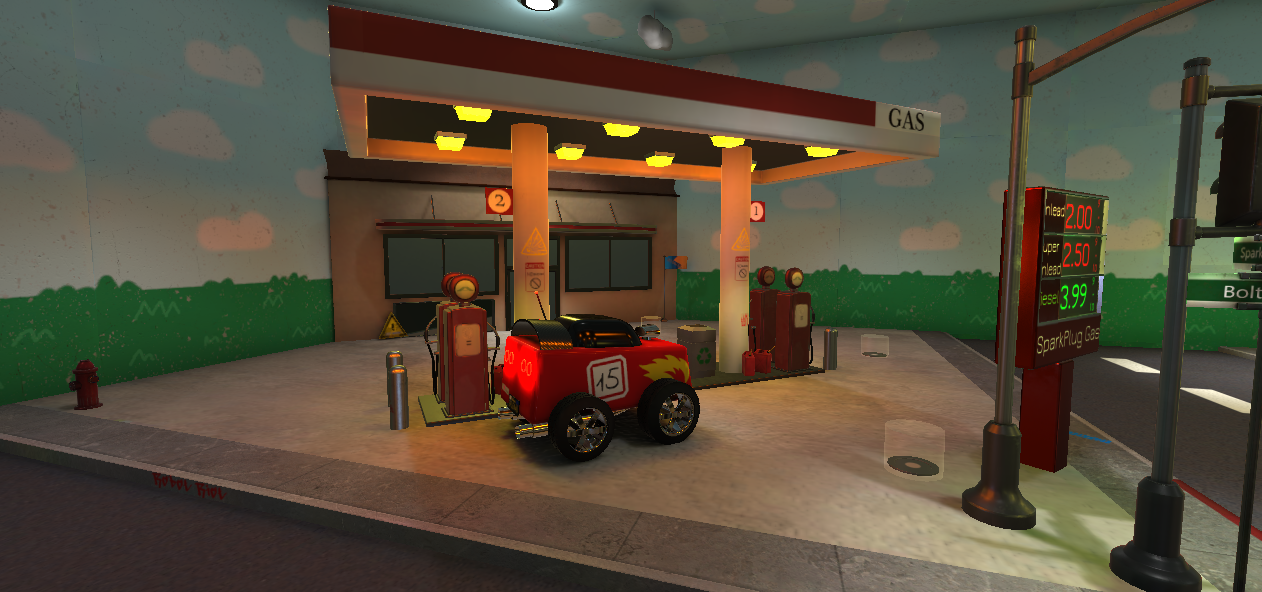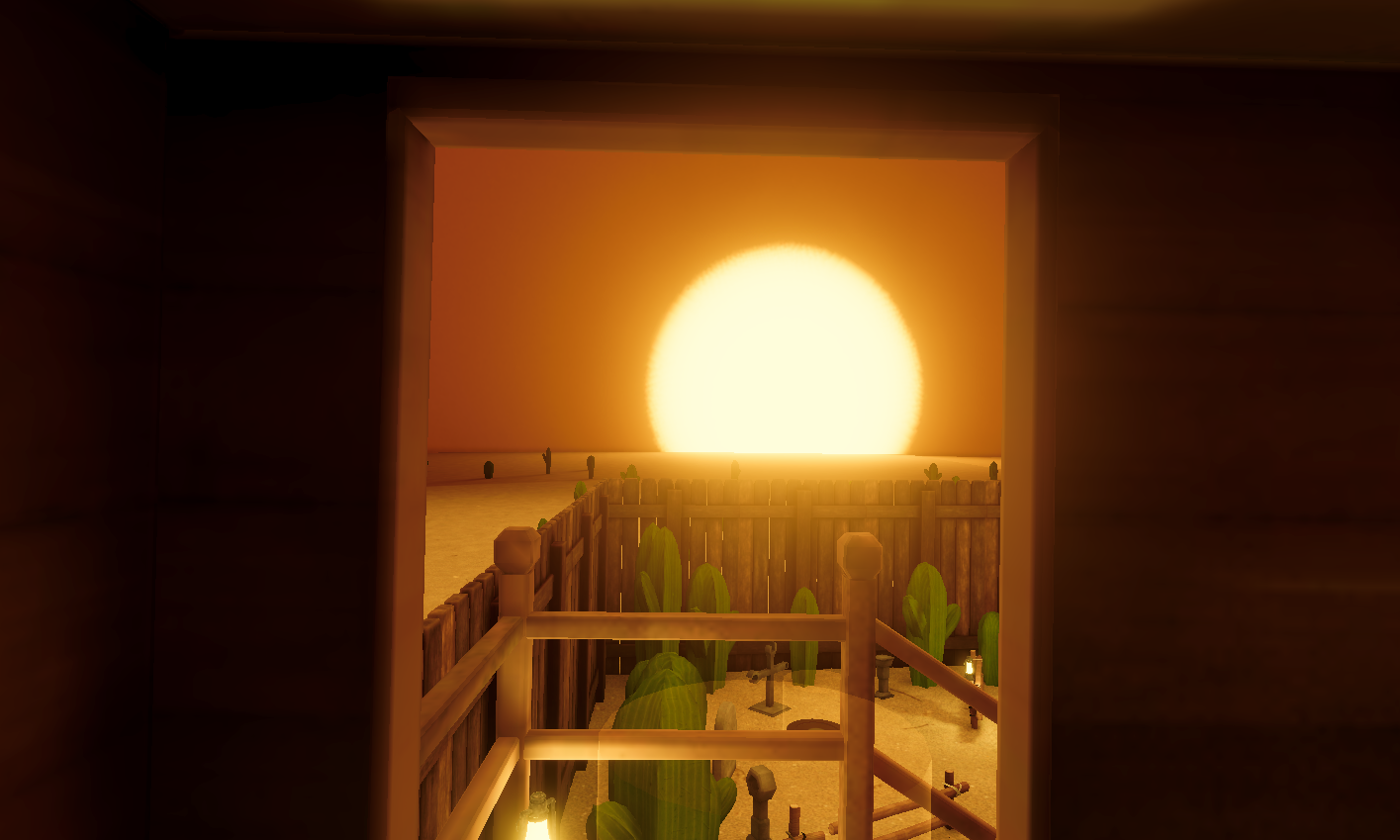Designer Blog #6 Postmortem
Hello hello everyone! I'm back again this week to give the final update about the production of Robot Riot, made by our very own Sparkplug Studios. Like always, our team is managed by our producer Miciah Coley, who has his own views on his own dev blog here.
If you're new here or need a refresher on our game, Robot Riot is a third person fighting game that gives players their very own bot character to control. By using a combination of bot mode (smaller bot that is faster and can use traps) and combat mode (larger bot that can use weapons). Each level has their own unique environment to fight your opponent in, filled to the brim with hiding spots and easter eggs. If either player cannot defeat their opponent within the time limit, sudden death activates and both players must navigate the burger mine rain to become the last bot standing.
This week, I want to review the entirety of production and my take of the events that occurred throughout production from my point of view.

What went right?
From my stance as the lead designer, I believe that communication involving design and the game's vision was solid throughout production. While I gave our team creative freedom with their work, I was able to collaborate with them to see if their work was in the direction I intended it to be. I was promptly available outside of our class time and sent near-immediate responses if our team needed better clarification on what I was envisioning.
What went wrong?
Something that I felt production was lacking was the organization of work completed by the team. We kept Github and Unity access to the project limited to only a few team members, so we did not have a set way to organize our assets for the project as we collected them. We had multiple folders for the same assets and random folders that we did not need once we imported assets to the project. Our 3D models were also inconsistent since we had different scales when working in Autodesk Maya and most of the 3D assets did not share texture sheets, which ended up creating a large file size when packing up the project files.
What would we do differently?
Similar to what went wrong, I think we can improve on our asset organization and maintain our game file sizes. We had multiple prefabs of the same type, and this led to having many unused prefabs that no longer worked with the game. We also were organizing our shared assets on our Drive folder by sprint, rather than by level or type (like level one and bot models). We caught onto this method of organization early on and later filed our assets in this way. I think we would also hold off any lightmap baking to the end of the production process, as this was one of the main reasons why our file size was so large.
What would we do again?
If we were to complete this project again, I would plan per sprint, not per level. We ended up rolling out a level per sprint in terms of props alone, and keeping the environment pieces separate helped us build out levels in a timely manner as well. We would also break down different chunks of levels into sections (environment and props, lighting and audio, etc.) so that we are not rushing to complete each task all at once but rather over time. In this sense, we would also keep most of our environment pieces as modular pieces in order to make building our levels easier on our level designers.
What did you learn?
After everything, I learned that taking on such a large team means a large workload to keep track of. Near the end of production, our producer and I felt like we were scrambling to find 2D and 3D assets to create in the last two sprints, and ultimately let those departments bug hunt our game builds as they did not have as much time to test and play as other departments. There were also times when different people on the team did not know what work was being done at the time, or when reviewing each sprint for each respective sprint review, simply revisiting the Jira board for the team would help as a refresher.
In my own personal opinion, it was also a large jump from working with a handful of people on a team to having over twelve members on our Sparkplug Studios team. That change I feel has prepared me to work on larger projects with larger teams in the future.

I am so fortunate to have worked on this game with our team, and I can proudly say that this game vision could have not come to light without the ups and downs we faced throughout production.
See you in the future!
Get Robot Riot
Robot Riot
A transforming robot combat game with power-ups and traps
| Status | Released |
| Author | CAGD |
| Genre | Fighting, Survival |
| Tags | Controller, Futuristic, Local multiplayer, Robots, Split Screen, Third Person, Unity |
More posts
- Producer Blog #6 PostmortemMay 08, 2025
- Designer Blog #5Apr 17, 2025
- Producer Blog #5Apr 16, 2025
- Designer Blog #4Apr 03, 2025
- Producer Blog #4Apr 03, 2025
- Designer Blog #3Mar 13, 2025
- Producer Blog #3Mar 13, 2025
- Producer Blog #2Feb 27, 2025
- Designer Blog #2Feb 27, 2025
Leave a comment
Log in with itch.io to leave a comment.